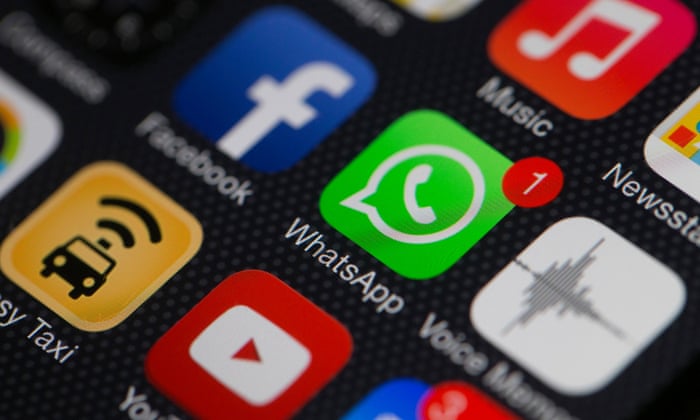Q1)Evaluate how the two trailers use the narrative technique of enigma to encourage the target audience to watch the films
The two trailers both use the narrative techniques of enigma to encourage the target audience to watch the films through several way. One of which, product 1, sees do it well with using sound as a way of enigma and to encourage target audience to watch the film, the fact that product 1 starts of with a dialogue, "What are you doing here?' automatically grasps the audiences attention, making them wonder the relationship between the two characters but also other questions, this encourages the target audiences to already want to watch the film to find out more. In addition, in product 1, the audiences see 2 male characters and 1 female character, within the trailer, the audience see shots that show each of their relationships together, from both good to bad (Todorov), the use of using emotion can carry out enigma to audience, making them wonder what the new equilibrium will be, audience would be persuaded to watch the film because they would be willing to go along the emotional journey with them.
Although, product 2, uses narrative techniques to encourage the target audience to the films is very different compared to product 1, one of them being the trailer shows very less dialogue, which creates more enigma for the audiences, the trailer is making the audiences guess the story and think for themselves to what the film may be about. In addition, precept 2, uses editing techniques to create the enigma and encourage audiences to watch the film, the fact that there are a lot of shots shown but they are shown very quickly, due to the fast paced shots, it is keeping the audiences alerted throughout the trailer, it is making the audience on toes and keeping them interested enough to encourage them to watch the film.
Both of product 1 and 2 use worded as "worldwide best seller" (product 1) and "a genre masterpiece" (product 2) as a technique to persuade the target audience to watch it, as they are letting the target adudicne to know what the critics already think and making the films sound good, the audience would be encouraged to watch the film and solve the enigmas that were created when watching the trailer.
Q2) Why are media products that represent outsiders, such as vampire films, so popular? You may also refer to other media products to support your answer
Both products represent vampires as 'dangerous'(Alvarado) and unwitting due to what they do - kill. One of the reasons to why media products represent outsiders such as vampire films is due to the fiction side, it allows the audience to gain a sense of escapism form their own lives (Uses and gratification), due to the fact that vampires aren't real, it can allow audiences to feel like they are not in reality for once and would be interested to see what if it was real and it would be like. Vampire films have become popular too and have also came into tv series such as 'Vampire Diaries" and "Teen Wolf", the media products attract the right target audience allow them to so popular because they are directly meeting to the audiences needs and giving them what they want. Media products allow audiences imagination to run free to which why they are so popular. The reason why I think media products that represent outsiders are so popular is because not only some of the audiences are able to create personal identity with them but it gives a wide group of audience a chance to see what it may be like to be an outside and follow their lives, maybe allowing a chance or a difference to happen? It could allow the vast majority of the audience to be a little more considerate towards groups that are considered outsiders such as youth, black people, ethnic backgrounds etc.
Media products that represent youth as outsiders are also so popular within an wide range of audiences; Ill Manors is a prime example. Ill Manors represents teenagers living in London, especially the teenagers that are working class and live in a council state, following their lives and making the audiences to really understand their character. The reason why Ill Manors had attracted such as large group of audiences despite being classified as an 'outsiders' is because of the message they given out, middle class audience were the target audience and as well as teenagers, teenagers were the target audience because understandably they would be able to build on personal identification with the characters but also build a personal relationship with them too, but the reason why middle class audience were Ill Manors main focus was because Plan B wanted educate and to raise awareness of the issues of teenagers and how we should really try to understand them instead of neglecting them.
Q3) Do you think official and unofficial websites contribute to a films box office success? You should refer to other media products to support your answer.
I think that official and unofficial websites contribute to a film's box office success, as it gives the audience an insight of the film without giving much away before the release of the film. For instance, the official website for the Hollywood block buster Eclipse includes a variety of features such as, the trailer, downloadable photos, an online store and a community link to social networking sites. This would be significant in promoting the film to their target audience, (15 - 24 years old; females) as the different features allows the individuals to actively interact and to feel more involved with the film. Significantly, the Eclipse website sells a range of merchandises for its fans which also contributes to the film’s box office success, as fans of this franchise are more likely to purchase an item and watch the film. Product 1 also includes a link to social networking sites such as Facebook, YouTube and Twitter. This would be important in promoting the film further to the audience globally, as individuals can be actively involved with the film through following the cast on Twitter or posting messages virally to their friends, which encourages more people to watch it.
Furthermore, an official and uncoffocial website that contributed to the films box office success was Ill Manors. Plan B had cleaver produced the website as a twitter page, and giving the audience an option of buying any merchandise and buying the DVD in graffiti style to fit the theme of the film but also suite the synergy of icongraophy throughout their print but also within the movie. Ill Manors also posted up exclusive posts and insights to the movie such as behind the scenes, that allowed the audience to contribute to the films box office success as the audience felt like they were going along the movies process in terms of the making due to the exlcives that Plan B allowed the fans to be involved in. Furthermore, Plan B also had his fans to take part in a user generated content of "hastagtagLondon" campaign that allowed them to even feel more involved in the movie and make a difference within an audience, before the film even came out, due to the vast majority of the audience promoting the film, automatically contributed to the films box office success as majority of the promotions of how audiences can get involved happened through the website.







